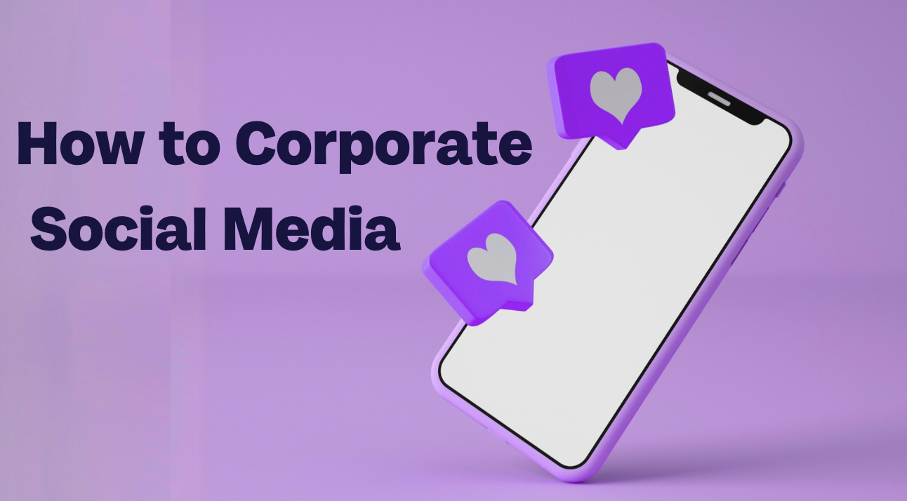Storytelling for corporate social media channels: 5 do’s and don’ts for companies on social networks

When scrolling through Instagram, TikTok and the like in the evening, only a few posts really manage to catch our attention: Well-told stories! They create an emotional connection in just a few seconds and arouse our curiosity.
Why social media is perfect for corporate storytelling
Successful companies and brands use the magic of storytelling not only to advertise products. They share behind-the-scenes impressions, convey their own values and connect with their audience. This works particularly well in entertaining, approachable social media formats. Instead of dry facts and figures, brands tell a touching story that inspires the community. It’s about telling experiences from your own work cosmos that are authentic and connecting. Whether it’s the founding story, employee anecdotes or milestones in the company’s history – it’s precisely such insights that give a brand that certain something:
Klicken Sie auf den unteren Button, um den Inhalt von giphy.com zu laden.
More visibility and commitment
Stories are not only more memorable, they also ensure more engagement with social media content. This increases brand awareness and is rewarded by the algorithm for future posts.
Emotional connection to your own target group
The best customers are those who come back again and again and remain loyal to their favourite brands. With regular relatable content and real added value for the community, the foundations are laid for becoming a fan favourite.
Differentiation from the competition
Unique stories are the only way to stand out from the competition. The more captivating the story, the more likely people are to feel emotionally addressed and drawn to a brand. A brand’s ‘signature story’ can and should take place again and again in different formats and variations, as long as the core remains the same and is consistent with the brand’s values.
Which channel is the right one for storytelling on social media?
The short answer is: all of them! Different platforms offer different storytelling options – from short captions to deep-dive videos. Visual storytelling is now rewarded by all platforms! Strong hooks and an entertaining structure are particularly well received on Instagram and TikTok, while longer, detailed stories find their place on YouTube.
LinkedIn is ideal for B2B storytelling: What was particularly challenging during product development? How does it feel to be part of the company? And how does the brand live its values in its day-to-day operations?
Side note: ‘Skilled’ LinkedIn creators can put ANYTHING into the B2B context.
Klicken Sie auf den unteren Button, um den Inhalt von www.linkedin.com zu laden.
Stories are even more effective when they are played on multiple channels and thus utilise their full potential. But be careful: please don’t sprinkle every platform with the same content according to the watering can principle. 99% of the time, the formats will neither suit the audience nor the platform, and the algorithm doesn’t reward that at all.
We have summarised which content is suitable for which platform in a blog post about transmedia storytelling But first a few practical rules of behaviour for the corporate social media playing field:
Do’s & don’ts for companies on social media
Klicken Sie auf den unteren Button, um den Inhalt von giphy.com zu laden.
Do’s
1. Keep it real!
Stay authentic, please! Honest and transparent posts using all the arts of storytelling arouse the interest of new potential followers (and customers!) and build trust within the community. Social media offers the perfect platform to demonstrate your corporate culture in a likeable and transparent way.
2. Know your audience: Target group-orientated communication
Understanding the target group and creating content that precisely addresses their interests and needs is essential for a successful social media strategy. This way, the messages are not only perceived, but also develop their full effect.
3. all or nothing: social media is not a minor matter
It’s all about staying on the ball (to stick with the pitch metaphors). Posting consistently and involving the community are the be-all and end-all. A strong call-to-action that encourages comments and discussions will generate a lot of engagement – the algorithm likes it! Community management should not be neglected either: Responding to feedback and establishing surveys or live sessions keeps contact with followers lively and direct – this encourages engagement and provides valuable feedback.
4. show what you’ve got!
People connect with people, not with logos. So show your people, their everyday life, their work. For optimum results, it can be useful to complete training courses with certain employees so that they feel confident in front of the camera and are happy to appear in the next reel. Ever thought about corporate influencers? More on this later.
5. It’s not what you say, but how you say it
For some brands, the casual Gen-Z tone just like Duolingo works. This is probably because real Gen-Zs create the content and, judging by their Instagram account, have all the creative freedom they need. This certainly doesn’t work for every brand, because: It is and remains a company account. When a traditional brand with conservative values and a serious, buttoned-up appearance suddenly wants to come across as ‘trendy’, it sometimes comes across as ‘cringe’.
Author’s note: I don’t want to see one more dusty Kreissparkasse implementing this ‘trend’. Please, enough is enough!
Don’ts
Klicken Sie auf den unteren Button, um den Inhalt von giphy.com zu laden.
1. No goal in mind?
Posting content aimlessly without a recognisable purpose is rather pointless and confuses the audience. Every post should pursue a clear goal and fit seamlessly into the company’s objectives. And even if it seems tempting and perhaps achieves reach for a brief moment: Please don’t blindly follow every trend. In the long run, this shatters the carefully crafted social media strategy because it completely misses the core values of the brand.
2. Copy & Paste on all channels
As mentioned above, every channel has its own target group, its own specific algorithm and needs customised content. One-size-fits-all does not apply to social networks and will annoy users.
3. Tech-slang at its best: that’s not charming
Very niche industries and brands in particular tend to fall prey to the curse of knowledge. What works in communication with trained users or in specific trade magazines is out of place on some social media platforms. Overly technical or industry-specific vocabulary may have a deterrent effect. Clarity and accessibility are the keys to success here.
4. Post & Ghost: Community is Key
What doesn’t go down well on Tinder is downright penalised on social networks. Ignoring the community – whether due to time constraints or because it involves critical topics – will sooner or later backfire on a brand. Regular engagement, on the other hand, shows that you are serious, take the concerns of your followers into account and are not just looking for quick likes.
5. The aesthetic is what counts
Strong, consistent visual branding across all channels is essential. A uniform visual identity strengthens recognition value and brand perception and promotes trust.
You can find out how to create a successful social media style guide here.
Last but not least: Corporate influencers – yes or no?
Klicken Sie auf den unteren Button, um den Inhalt von giphy.com zu laden.
A good corporate social media concept definitely requires work. Successfully implementing storytelling in social networks requires a certain amount of dedication, a deep understanding of the target group and a great deal of creativity.
Many companies therefore rely on corporate influencers these days. These are employees who act as ambassadors and represent the brand on social channels. They share personal stories from their day-to-day work or exclusive insights behind the scenes, giving the brand a personal touch that creates authenticity and closeness. Stories from corporate influencers have a particularly authentic effect on users, as they make companies approachable. If they trust the person, they also trust the brand. It is often an advantage to establish several people on social networks at once. This allows them to tell the stories of their company from different perspectives.
We have summarised exactly what this can look like and what to look out for in Corporate Influencer: How employees become brand ambassadors – and stay that way!
However, the role of corporate influencer requires time and resources. It cannot simply be managed in addition to regular work and is not suitable as a secondary task for interns or working students (who are often entrusted with the tedious task of ‘social media’), as they are usually only temporary in the company and should not serve as the only ‘faces of the brand’.
However, if motivated team members can be found to take on this role, it can be a very effective method of successfully utilising corporate social media. Even if no-one is specifically willing to do this at first, getting started with corporate communication on social networks is always a worthwhile initiative. With a few basic tips and tricks from our article, this challenge can be easily mastered.
Share this article
Related articles

8 April 2025








